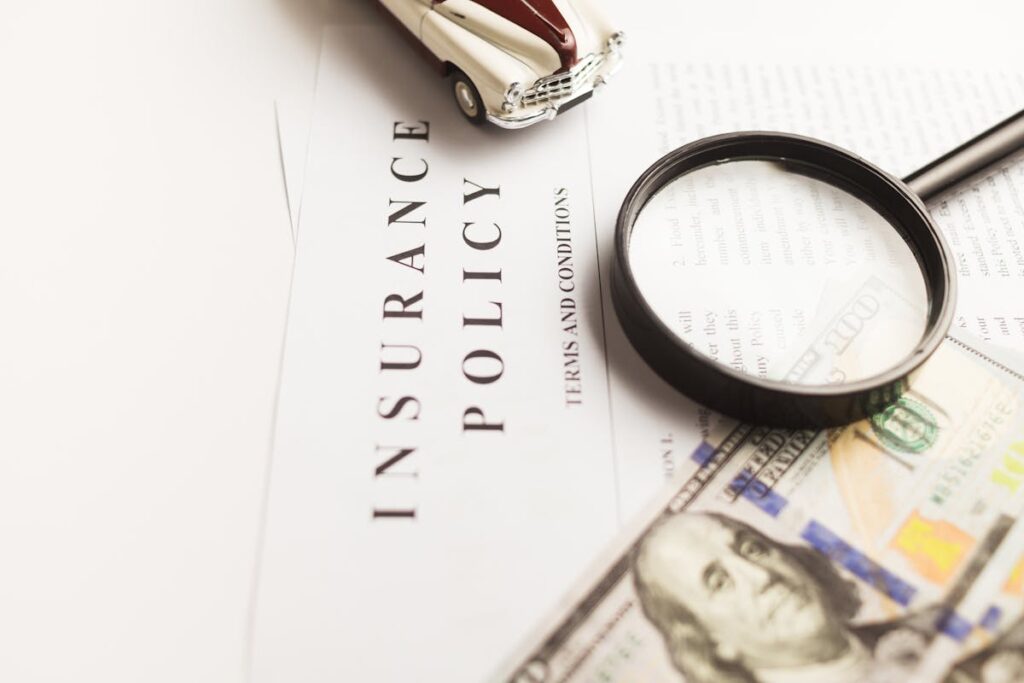Gap insurance is a specialized coverage designed to protect vehicle owners from financial losses in case of a total loss event. It covers the gap between a car’s depreciated actual cash value and the remaining balance on the auto loan or lease, often overlooked by standard insurance. Considering vehicle depreciation rates, gap insurance is essential for new car buyers and those with extensive financing. Understanding its mechanics and benefits is key to informed insurance decisions.
What Is Gap Insurance?
Gap insurance, known formally as Guaranteed Asset Protection insurance, is a specialized form of coverage that addresses the financial discrepancy between the actual cash value of a vehicle and the balance owed on a loan or lease in the event of a total loss. This coverage becomes essential when depreciation exceeds the principal reduction of vehicle loans, leaving a financial gap. Understanding what is coverage in this situation involves recognizing that gap insurance benefits include safeguarding the insured from potential financial liability beyond standard auto insurance. This protection guarantees that the policyholder is not burdened by a significant financial shortfall. The primary benefit lies in its ability to alleviate the risk of outstanding debt following a vehicular write-off, thereby offering financial security and peace of mind.
How Does Gap Insurance Work?
Understanding the mechanics of gap insurance requires an examination of its operational framework. Gap coverage functions by bridging the disparity between the actual cash value (ACV) of a vehicle and the outstanding balance on a car loan or lease. This insurance benefits policyholders by covering the financial gap when a vehicle is declared a total loss due to theft or accident. In such scenarios, standard auto insurance typically reimburses only the ACV, which may be less than the amount owed on the vehicle. Gap insurance consequently mitigates potential financial liabilities for the insured by compensating the difference. Activation of the coverage necessitates a qualifying event, upon which the insurer disburses the requisite funds directly to the lender, ensuring loan or lease settlement.
The Difference Between Gap Insurance and Regular Car Insurance
While both gap insurance and regular car insurance provide essential financial protection for vehicle owners, they serve distinct purposes and operate under different conditions. Regular car insurance typically covers damages or losses up to the vehicle’s actual cash value at the time of an incident. This valuation can lead to regular insurance limitations, particularly when the owed loan amount on the vehicle exceeds its current market value. In contrast, gap insurance benefits consist of bridging this financial discrepancy by covering the gap between the car’s depreciated value and the remaining loan balance. Consequently, gap insurance is supplementary, activating primarily in total loss scenarios. It is especially beneficial for those with significant negative equity or rapid depreciation vehicles, offering targeted financial security beyond standard coverage.
Situations Where Gap Insurance Is Beneficial
Gap insurance is particularly advantageous in scenarios involving new vehicle depreciation, where the value of a newly purchased car can decrease considerably within the first few years. In the event of a total loss, such as a severe accident or theft, the payout from standard auto insurance may not cover the remaining balance on a vehicle loan or lease. Gap insurance bridges this financial disparity by covering the difference between the depreciated value of the vehicle and the amount owed, mitigating potential monetary loss for the policyholder.
New Vehicle Depreciation
New vehicle depreciation is a critical factor that can make gap insurance a prudent choice for many car buyers. When a new car is purchased, its vehicle value typically depreciates rapidly, often dropping by approximately 20% to 30% within the first year alone. This immediate decline in value, referred to as new car depreciation, can create a financial gap between the amount owed on an auto loan and the current market value of the vehicle. In such cases, the standard auto insurance coverage may not be sufficient to cover the entire loan balance if the vehicle is declared a total loss. Hence, gap insurance becomes essential to bridge this disparity, protecting car owners from potential financial liabilities associated with depreciation-induced value reductions.
Total Loss Scenarios
In what circumstances does gap insurance become essential? Gap insurance is particularly crucial in total loss scenarios, where the vehicle is deemed irreparable or stolen beyond recovery. In such cases, insurance claims typically cover only the actual cash value (ACV) of the vehicle at the time of the loss. Due to rapid depreciation, the ACV often falls short of the outstanding loan or lease balance, creating a financial discrepancy. Here, gap insurance effectively bridges this financial shortfall, compensating the difference between the ACV and the remaining amount owed on the vehicle. This coverage guarantees that the policyholder is not burdened with residual debt after the insurance payout, thereby safeguarding against potential financial distress in a total loss event.

Who Should Consider Gap Insurance?
Individuals purchasing new vehicles or entering lease agreements should evaluate the potential benefits of gap insurance. This type of coverage is particularly pertinent for those whose vehicle loans exceed the current market value of the car, a common scenario with new cars and leased vehicles. Additionally, gap insurance offers financial protection by covering the difference between the car’s depreciated value and the outstanding loan balance in the event of a total loss.
New Car Buyers
For those purchasing a new vehicle, especially when financing the acquisition, gap insurance emerges as an essential consideration. This insurance covers the difference between the car’s actual cash value and the outstanding car financing balance, which can be substantial in the initial years due to depreciation. Typically, new car buyers are often attracted by enticing buyer incentives that may include low or no down payment offers. However, these incentives can lead to a situation where the loan balance exceeds the car’s depreciated value. In the event of total loss or theft, without gap insurance, buyers could face significant financial liabilities. Consequently, considering the rapid depreciation of new vehicles, gap insurance serves as a prudent financial safeguard for those engaging in car financing.
Lease Agreement Holders
While new car buyers often prioritize gap insurance to protect against depreciation, lease agreement holders also encounter similar financial exposures. Lease agreements typically involve specific insurance requirements, obliging lessees to maintain thorough and collision coverage. However, these coverages may not account for the discrepancy between the vehicle’s value and the remaining lease balance in the event of a total loss. This gap arises due to depreciation, which can outpace payments made towards the lease. Gap insurance becomes a critical consideration for leaseholders, safeguarding against potential financial liabilities. Without it, lessees might face substantial out-of-pocket expenses if an accident results in a total loss. As a result, those engaged in leasing should evaluate their insurance portfolio to determine the necessity of gap insurance.
How to Purchase Gap Insurance
Maneuvering the process of purchasing gap insurance requires an understanding of the various avenues available to consumers. Primarily, gap insurance providers offer purchasing options through several channels, each presenting unique considerations. Individuals may opt to acquire gap insurance directly from their auto insurer, offering streamlined integration into existing policies, guaranteeing consistent terms and conditions. Alternatively, dealerships often provide gap insurance at the point of sale, though this can sometimes reflect higher premiums due to added administrative fees. Additionally, third-party providers present another viable option, frequently offering competitive rates and flexible terms. It is vital for consumers to meticulously evaluate policy conditions and provider reputations to secure ideal coverage, aligning with financial and coverage objectives. Analyzing these purchasing options is significant for informed decision-making.
Factors That Affect the Cost of Gap Insurance
Several factors intricately influence the cost of gap insurance, each requiring careful analysis to understand their impact on premium calculations. Primarily, the vehicle’s depreciation rate plays a vital role; faster depreciation often results in higher premium rates. Additionally, the original loan amount versus the vehicle’s current market value markedly affects coverage limits, thereby influencing premiums. Insurers also consider the vehicle’s make, model, and age, as older or less valuable vehicles typically incur lower premium rates. Moreover, the insured’s credit score and driving history can impact cost assessments, as higher-risk profiles may lead to increased premiums. Finally, policy duration and specific insurer policies can additionally modulate premium rates, necessitating thorough evaluation for best financial planning.
Common Myths About Gap Insurance
How frequently do misconceptions cloud the understanding of gap insurance? Several prevailing myths contribute to the confusion. One common misconception is that gap insurance is universally necessary for all vehicle loans. Clarification reveals that it is primarily beneficial for those with high loan-to-value ratios. Another insurance myth suggests that gap insurance covers all vehicle-related expenses. In reality, it only addresses the difference between the vehicle’s actual cash value and the remaining loan balance. Additionally, some believe gap insurance is redundant if extensive auto insurance is in place; however, it offers distinct coverage not provided by standard policies. Misconceptions clarified, gap insurance serves a specific function, necessitating informed decisions based on individual financial circumstances and vehicle depreciation rates.
Tips for Managing Your Gap Insurance Policy
To effectively manage a gap insurance policy, policyholders should first conduct a thorough evaluation of their vehicle’s depreciation rate and outstanding loan balance. This analysis is essential in determining if the current coverage limits remain adequate over time. As vehicles depreciate and loan balances decline, the necessity for gap insurance may diminish, consequently impacting decisions regarding policy renewal. Policyholders must guarantee that their gap insurance aligns with the evolving financial landscape of their auto loan, particularly if the vehicle’s market value approaches the remaining balance. Regularly reviewing the terms of the policy can prevent overpayment and unnecessary coverage. Additionally, policyholders should remain informed about changes in coverage limits, assuring they maintain ideal protection without exceeding their financial requirements.
Frequently Asked Questions
Can Gap Insurance Be Applied to Leased Vehicles?
Gap insurance is applicable to leased vehicles, providing essential leased vehicle coverage. This coverage addresses the gap between the vehicle’s depreciated value and the remaining lease balance, highlighting gap insurance necessity in protecting financial liability during unforeseen loss events.
Does Gap Insurance Cover Personal Injuries in an Accident?
Gap insurance does not encompass personal injury claims within its accident coverage framework. It primarily addresses the financial difference between the vehicle’s actual cash value and the outstanding loan or lease balance after a total loss incident.
Is Gap Insurance Transferable if I Sell My Car?
Gap insurance generally does not allow policy transfer upon selling a vehicle. Instead, coverage options typically require cancellation and potential purchase by the new owner. Policy terms may vary, necessitating detailed examination for specific conditions regarding vehicle ownership changes.
How Does Gap Insurance Payout in Case of a Total Loss?
In a total loss event, gap insurance provides a payout covering the difference between the vehicle’s actual cash value and the remaining loan balance, ensuring the insured does not incur an uncompensated financial loss from the lender.
Can I Cancel Gap Insurance Before the Policy Term Ends?
Cancellation of gap insurance before the policy term concludes typically requires following a specific cancellation process. Refund eligibility varies depending on the provider’s terms, often involving prorated refunds based on the remaining coverage period.

